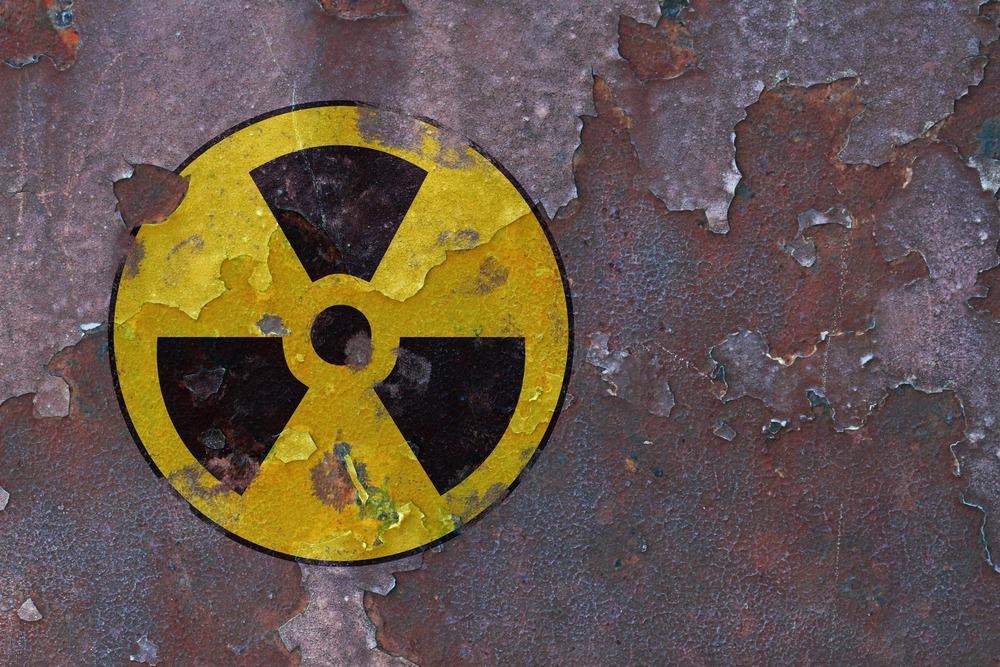Due to its severe toxicity, the sensitive and accurate measurement of uranyl ion (UO22+) in water samples is of great interest. A recent Microchemical Journal paper focuses on creating a unique and efficient nanosystem premised on DNAzyme and graphene oxide (GO) for fluorescent uranyl ion detection.

Study: A smart DNAzyme/graphene oxide nanosystem for fluorescent sensing of uranyl ion with high sensitivity and selectivity. Image Credit: Kunertus/Shutterstock.com
Environmental Impacts of Uranyl Ion (UO22+)
Uranium is now extensively employed in both the defense and civilian sectors. Uranyl ion (UO22+), the most stable chemical state of uranium in water, is a significant non-degradable pollutant that poses a significant threat to the ecosystem and human health owing to its high biochemical toxicity. As a result, detecting trace-level UO22+ in water samples (e.g., drinking water, tap water, etc.) is of critical importance.
Elemental analysis detection, electron diffraction spectrometry, mass spectrometry, and other techniques can be used to determine UO22+. Nonetheless, these approaches have inherent flaws, such as large apparatus, expensive costs, and intricate operating procedures, limiting their applicability in on-site uranyl ion detection.
Fluorescence Detection Method: The Future of Uranyl Ion Sensing
Fluorescence, colorimetry, photocatalysis, electrochemical luminescence, and other simple sensing techniques show considerable promise for determining UO22+ in aqueous systems. The fluorescence approach, in particular, has received a lot of interest in recent years owing to its inherent advantages, such as excellent sensitivity, low usage, ease of setup, and mobility.
Several fluorescence detectors made from organic compounds, quantum dots, and metal-organic frameworks (MOFs) with different operating theories have been developed for UO22+ detection. However, because of the complexities of the samples, sensitivity is one of the key obstacles in the practical detection of UO22+. Developing innovative fluorescence sensors with excellent specificity and sensitivity for uranyl ion detection is still extremely important.
DNAzymes and Graphene Oxide for Fluorescent Sensing
Because of their excellent specificity, DNAzymes have increasingly been evaluated as interesting biosensors for different metal ions. DNAzymes are a kind of active nucleic acid that has exceptional catalytic characteristics. DNAzymes might be selectively triggered in the presence of a particular metal ion as a cofactor to break the DNA substrate helix into two single-stranded DNA (ssDNA) pieces.
Graphene oxide (GO), a classic two-dimensional (2D) nanocomposite, has been extensively used as a high-efficiency quencher in fluorescence detectors for a variety of targets in recent years. In contrast to the prior quenchers covalently tagged on DNAzymes, GO functions as a label-free quencher, avoiding the costly dual quencher labeling technique.
A Novel Nanosystem for Uranyl Ion Detection
The researchers described a unique and intelligent DNAzyme/GO nanosystem for specific and accurate measurement of UO22+ in this work. The shortened version of the original UO22+ specific DNAzyme used as the sensing platform, and the distinct associations between GO and DNAs with diverse structures are the major features of this fluorescent nanosystem. This nanosystem was effectively used as a prototype system for UO22+ identification in ambient water samples.
Key Findings of The Study
The developed nanosystem differs significantly from prior DNAzyme-based fluorescence sensors for UO22+ in its operation. The alteration of DNAzyme is critical in the suggested uranyl ion sensing nanosystem in the current study. The produced nanosystem's encouraging promise for UO22+ detection can be related to GO's super fluorescence quenching capacity, reducing the background fluorescence intensity.
The presented fluorescent nanosystem may be used for the turn-on detection of UO22+ in a broad dynamic range with a concentration range of 25 pM due to the strong specificity of DNAzyme towards UO22+, high accuracy of the fluorescent method, and superior quenching capability of GO. The optimum GO concentration was 5 mg L-1, which yielded the greatest increase in fluorescence and was thus chosen as the ideal level.
Future Outlook
The UO22+ composition in sampling sites achieved by the proposed fluorescent detecting nanosystem was consistent with the values acquired from the inductively coupled plasma mass spectroscopic analysis (ICP-MS) method. This demonstrates the proposed nanosystem's prospective functionality for UO22+ identification in actual aqueous systems.
This study also showed an alternate notion for the fluorescence detection of UO22+ and provides a broad technique that may be used in the future to construct a variety of DNAzyme-based fluorescent detectors.
Reference
Cheng, C. et al. (2022). A smart DNAzyme/graphene oxide nanosystem for fluorescent sensing of uranyl ion with high sensitivity and selectivity. Microchemical Journal. Available at: https://doi.org/10.1016/j.microc.2022.107596
Disclaimer: The views expressed here are those of the author expressed in their private capacity and do not necessarily represent the views of AZoM.com Limited T/A AZoNetwork the owner and operator of this website. This disclaimer forms part of the Terms and conditions of use of this website.